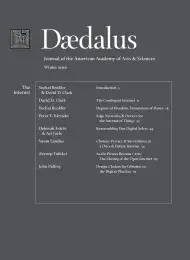Design Choices for Libraries in the Digital-Plus Era
Libraries are more important, not less so, in a digitally networked era. Despite the fact that today’s mobile devices feature Google’s search box and Apple’s Siri to help us find a quick answer to just about any question, we ought to be investing more capital than ever in our public libraries. We need libraries in the digital era to provide a public option to ensure sustained, free, equitable access to knowledge and preservation of our cultural and scientific heritage. In a period when both the analog and digital are useful, the design choices for those building, and reimagining, libraries are many and complex. We ought to design our libraries to meet the near-term possibilities of a networked environment, as well as the long-term requirements of democratic societies and the practice of scholarship. These design choices involve trade-offs and new commitments that may pit future activities against entrenched present-day interests. The essential design choice is between reliance on ever-more efficient interfaces, often developed by commercial outfits, and interfaces that are developed by the library community, engaging the public in coproduction and extending outward via the networked public sphere. The fate of libraries as vibrant institutions with broad public support could turn on the outcome of these design decisions. The challenges facing libraries also inform conversations about the future of other public-facing institutions, such as schools and newspapers, which are important contributors to an informed citizenry and a vital republic.
The main building of the Chicago Public Library (CPL) occupies a full city block downtown. From the outside, the building is massive and imposing, yet also appealing in an institutional way. Once inside, however, the building is far from intuitive. You are not met by a warm and welcoming reading room. There’s not an obvious pathway to the popular books and DVDs, which are floors away. You find yourself instead in a warren of long hallways, occasionally punctuated by guards and metal detectors: unmistakable signs of the time we live in and the realities of running a public institution in a big city.
The essential concern that animates this essay is this: what if people turn away from imposing buildings like the massive Chicago Public Library and turn instead to their mobile devices, serviced by commercial firms, to meet their needs for knowledge and information in an increasingly digital future? If that . . .
